This is a lovely one-bowl, easy chocolate coconut cake recipe. Both flavors come through without them overpowering each other. It has a fluffy crumb and a glaze made with coconut cream that is phenomenal on its own.
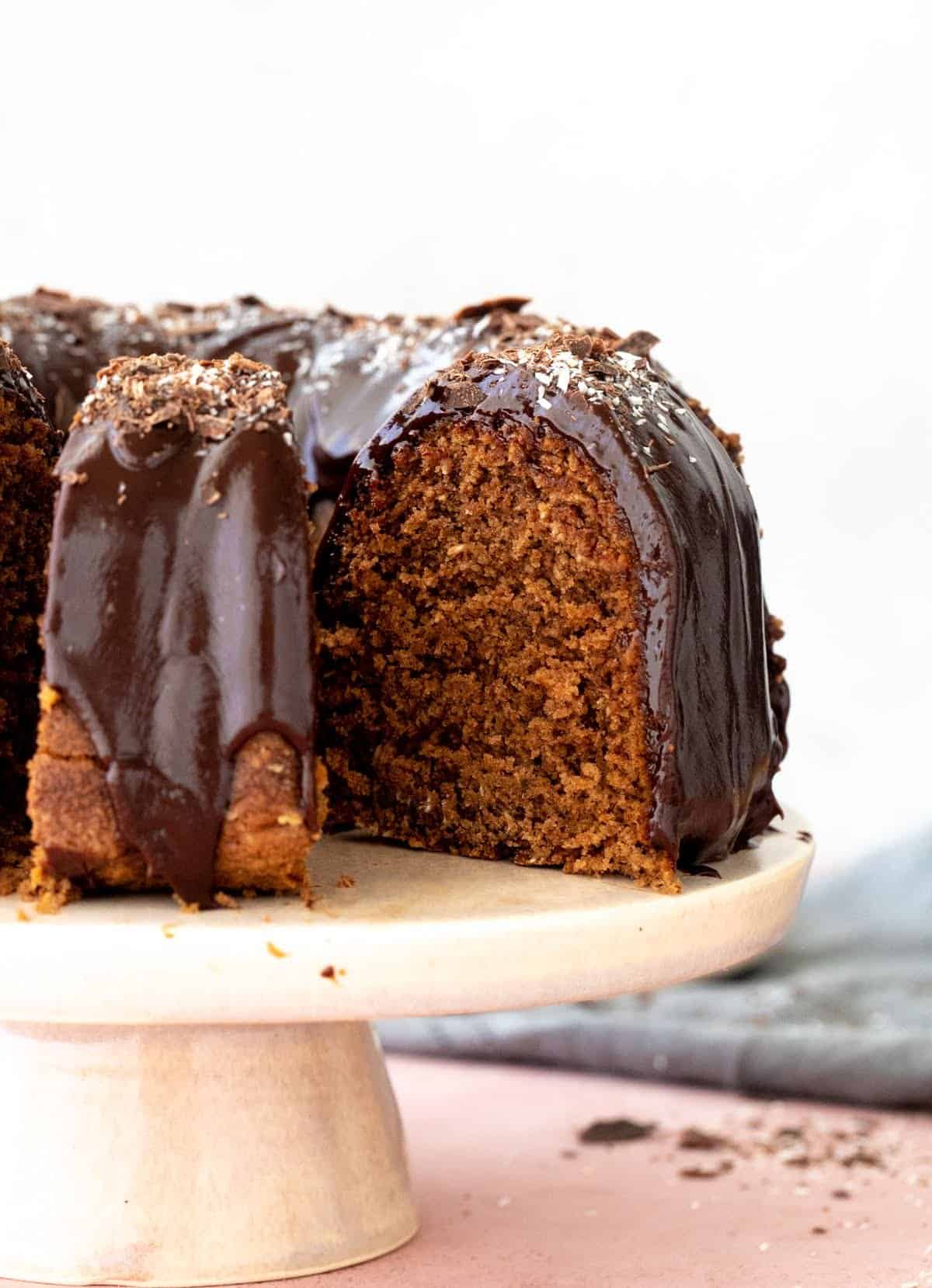
Double chocolate and coconut
We love bundt cake recipes in this blog, and an update of this one was long overdue.
Not too sweet, with enough coconut and chocolate flavors, this is an excellent cake for an afternoon tea or dessert. It usually finds a place at our Easter brunch table with the ricotta pie and mini egg cookies.
Did I mention it's a one-bowl recipe? You simply dump the ingredients in a bowl and beat for a few minutes. You're welcome.
So, I tweaked and adapted a recipe from an old cookbook that resulted in this wonderful chocolate coconut cake.
This blog is called Vintage Kitchen for a reason. I absolutely adore old cookbooks and the wonder of finding amazing recipes that are still relevant after decades.
- Just sweet enough: it's not a very sweet cake. You can increase it by using milk chocolate in the frosting instead of, or in addition to, dark chocolate.
- One bowl easy: it has oil (instead of butter), and it's simply a matter of beating the ingredients together in a large mixing bowl for a few minutes.
- Freezes well: you can make it ahead and freeze it (unfrosted and well-wrapped) until ready to serve.
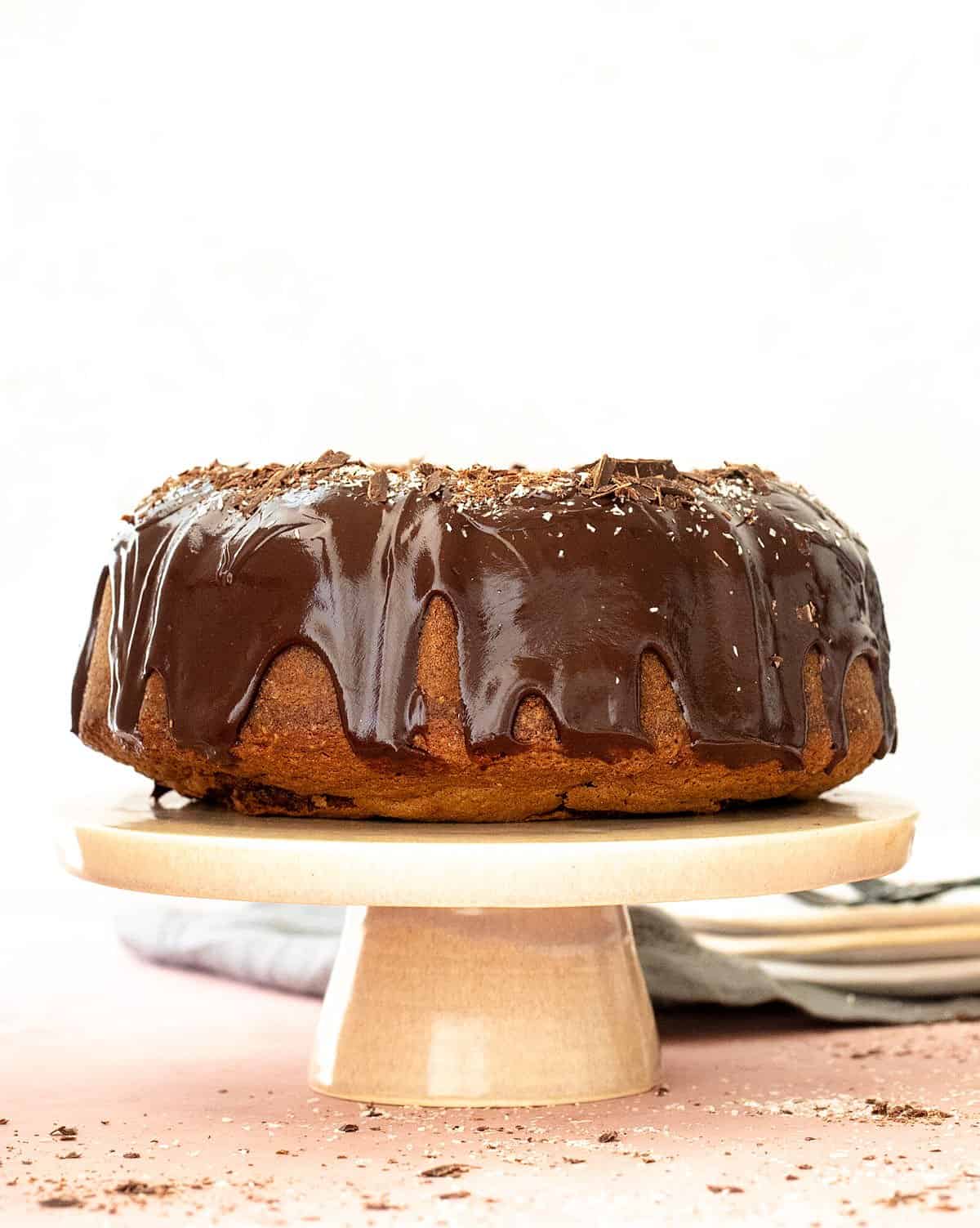
Ingredient Notes
Quantities are listed in the recipe card towards the end of this post. The Ingredients page has more details and lists the brands we use.
- Chocolate: use your favorite dark semisweet chocolate.
- Coconut: we use unsweetened, shredded coconut. Make sure it's soft and moist.
- Buttermilk: it makes the preparation tender and counteracts the metallic flavor of the baking soda. What if you don't have buttermilk? You can buy buttermilk powder and prepare it as you need to. Or make homemade buttermilk, which is super easy. Find it in the Notes section of the recipe card.
- Coconut milk: it adds extra coconut flavor, and you can buy it at the store or online. If unavailable, substitute it for more buttermilk.
- Sour cream: use the regular, full fat type.
- Brown sugar: light or dark sugar, both work.
- Oil: vegetable oil such as sunflower oil (my choice), canola, or coconut oil.
- Baking powder and baking soda: make sure they're not expired.
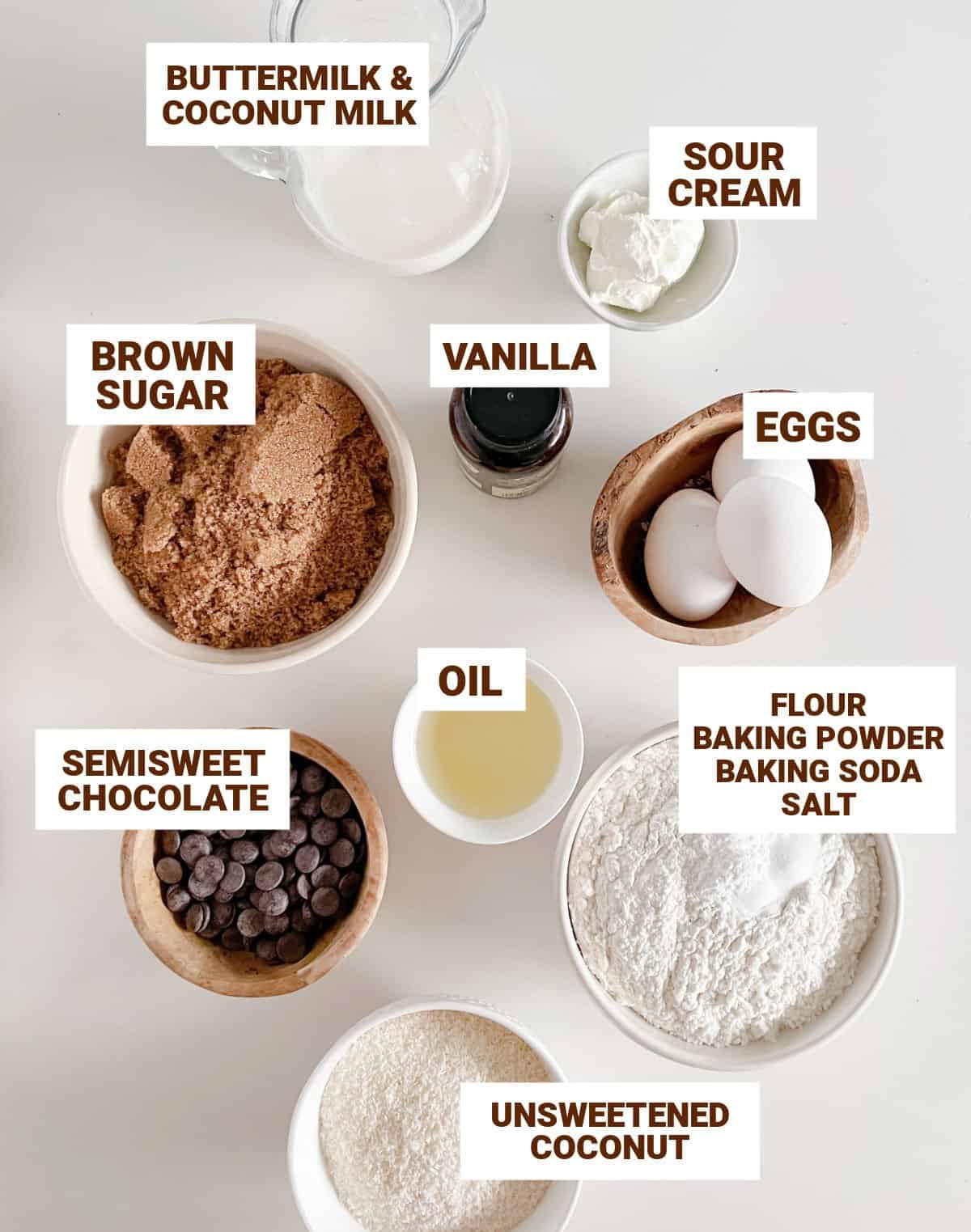
Preparing the bundt pan
If you love making bundt cakes, you probably know the pain of not being able to remove it from the pan in one piece. It has happened to me many times!
There are several ways of dealing with this:
Shortening and flour: use soft shortening to grease the pan, every angle, every nook and cranny until it's completely covered. Using your fingers is messy but effective. You can also use a brush. Sprinkle flour and rotate the pan to cover it completely. You'll have to do it to one side and then the other. Make sure you flour the center tube. Turn the pan upside down over the kitchen sink and smack lightly it against the edge. The excess flour will fall, leaving a thin layer behind. Your pan is ready to be filled.
Cake goop or cake pan-release paste: it's one of my favorites, along with the shortening method above, because it's very effective. Mix equal parts (volume: cups or tablespoons) of shortening, flour and vegetable oil (sunflower or canola) to make a paste. Use it to coat the pan with a brush. Store it in an airtight container (I use a jar) for a month at room temperature or up to 3 months in the refrigerator.
Baking spray: use a spray labeled as having flour or specifically made for baking (as opposed to cooking). It has to have flour; otherwise, the cake will likely stick when removed. At least, that's my experience. I hardly use it anymore.
Recipe: whenever I find a great bundt cake recipe that can be easily removed from an intricate bundt pan, even though I didn’t follow step 1 above, I cling to it like life itself.
Melting the chocolate
Always start with chopped chocolate in a microwavable or glass bowl. You can use the microwave or a double boiler. In both cases, make sure it doesn't scorch.
There are 2 ways:
- Microwave: melt the ingredients on high for 10 seconds and mix well. Repeat until all the chocolate is melted. Be careful you don't scorch it. That's why it's important to mix it well between each heating.
- Stovetop: put the bowl with chocolate and butter over a smaller pan with a few inches of water. Over medium heat, let the chocolate and butter melt, stirring occasionally. Make sure the bottom of the bowl doesn't touch the water and that no water gets into the bowl. If the water boils too much before the chocolate is melted, turn the heat off and let the hot vapor melt the remaining chocolate.
Steps to make this cake
It's a one-bowl recipe. This means you only need a large bowl and an electric mixer.
We use oil instead of softened butter, so there's no creaming step, which makes the coconut chocolate batter come together in minutes.
Put all the ingredients except the coconut and melted chocolate in the bowl and beat at medium speed until mixed. Add the rest of the ingredients, beat for a few minutes, and that's it; the cake batter is ready to be baked.
Medium or low speed: since we're mixing the flour mixture together with the rest of the ingredients, don't do it at high speed. Flour has gluten, and it develops the more it's mixed. an overmixed batter will make the cake tougher. So stick to the time and speed instructed in the recipe.
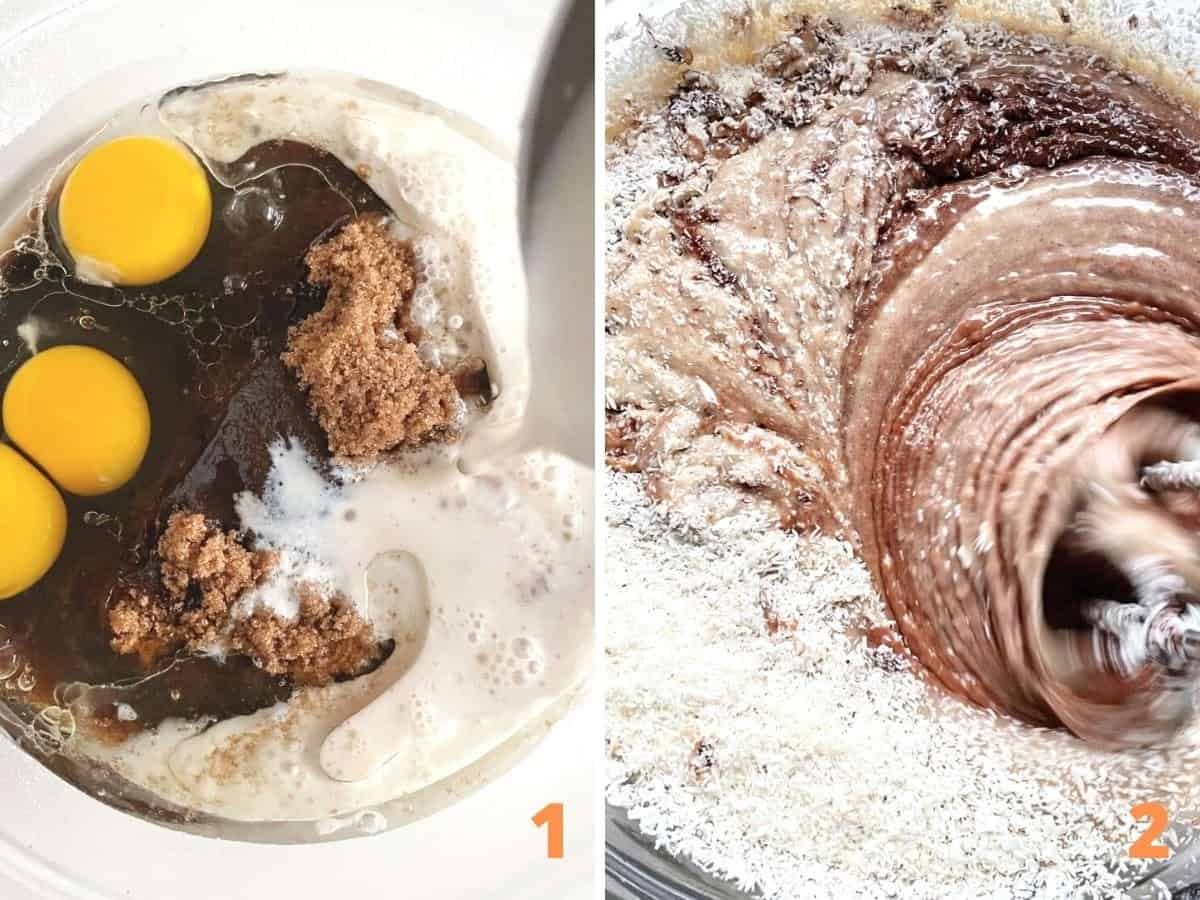
Baking the cake
- Preparing the bundt cake pan (or tube pan): I butter and flour the pan and refrigerate it while making the batter. This way, the coating hardens so when the cake is baked it doesn't stick much to the sides of the pan, making it easier to remove.
- Filling the pan: the batter should come up ⅔ or ¾ of the pan capacity, no more than that. If the pan is filled too much, the excess cake batter will overflow in the oven. And it will take longer to fully bake, making the cake drier.
- Crack on top of the cake: this is normal and a sign that the oven and leaveners in the cake mix are doing their job.
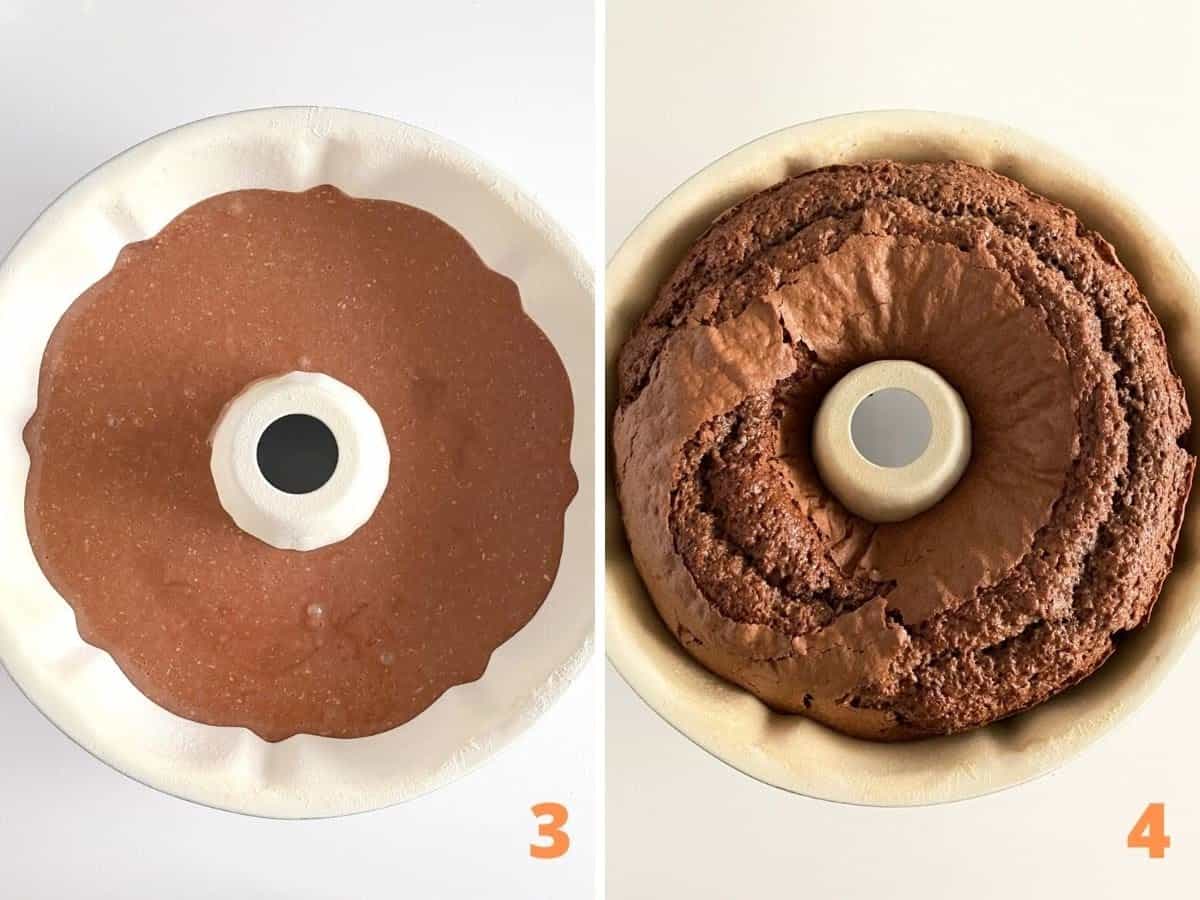
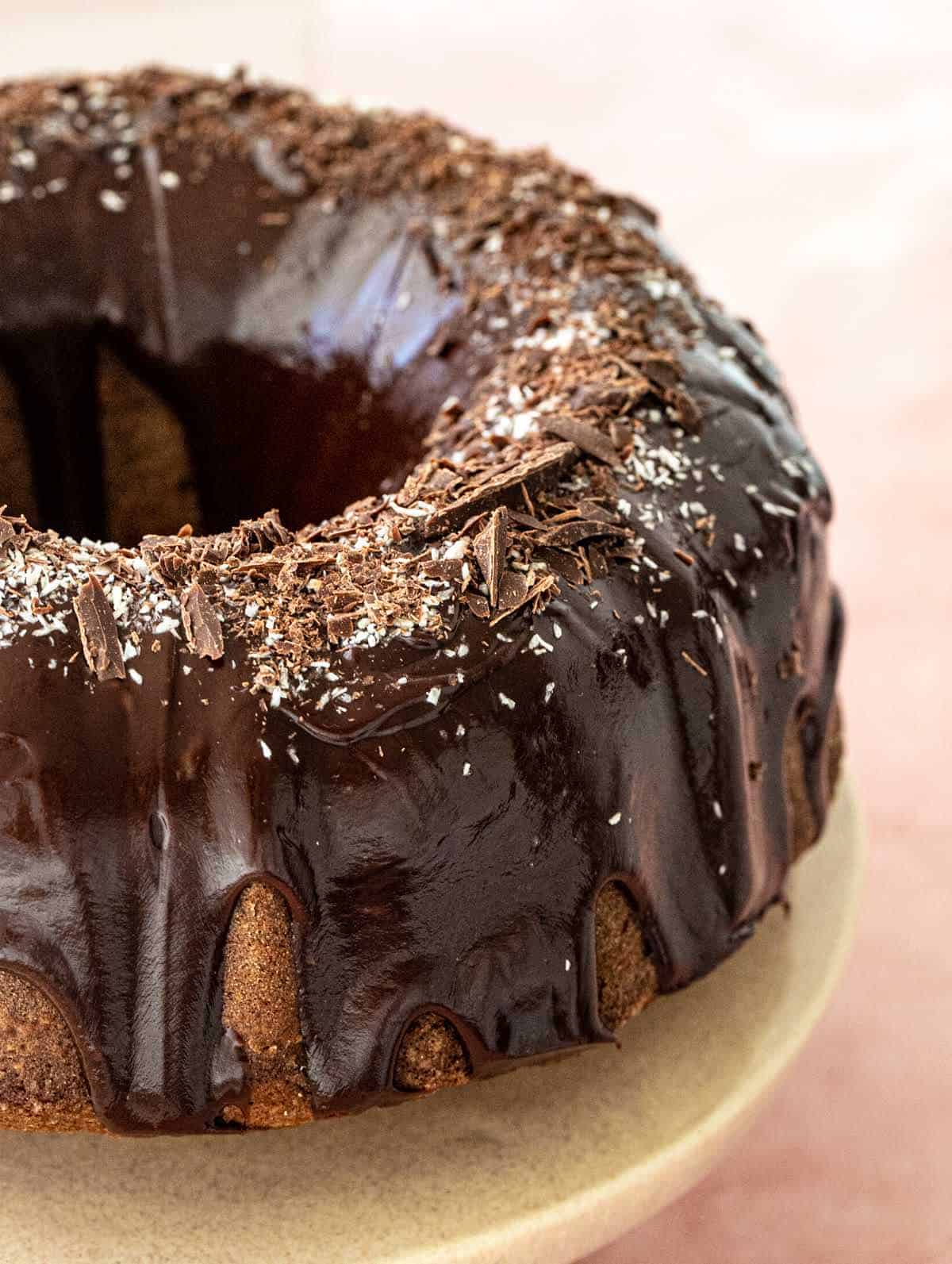
The chocolate ganache glaze
The chocolate glaze adds a lot to the final bite. It's hands down my favorite chocolate glaze, a ganache with the addition of corn syrup (or honey) that makes it silkier and prevents it from hardening too much. I like the frosting to remain soft.
It's the same one we use for our beloved moist chocolate bundt cake recipe but uses coconut cream instead of regular cream.
Cool cake: this is a crucial step before pouring the chocolate ganache. If the cake is still warm, the icing will start to melt.
Coconut for decoration: I like to use shredded toasted coconut, the same used for the cake batter. Large coconut flakes look pretty but are not great to bite into, so I stay away from them.
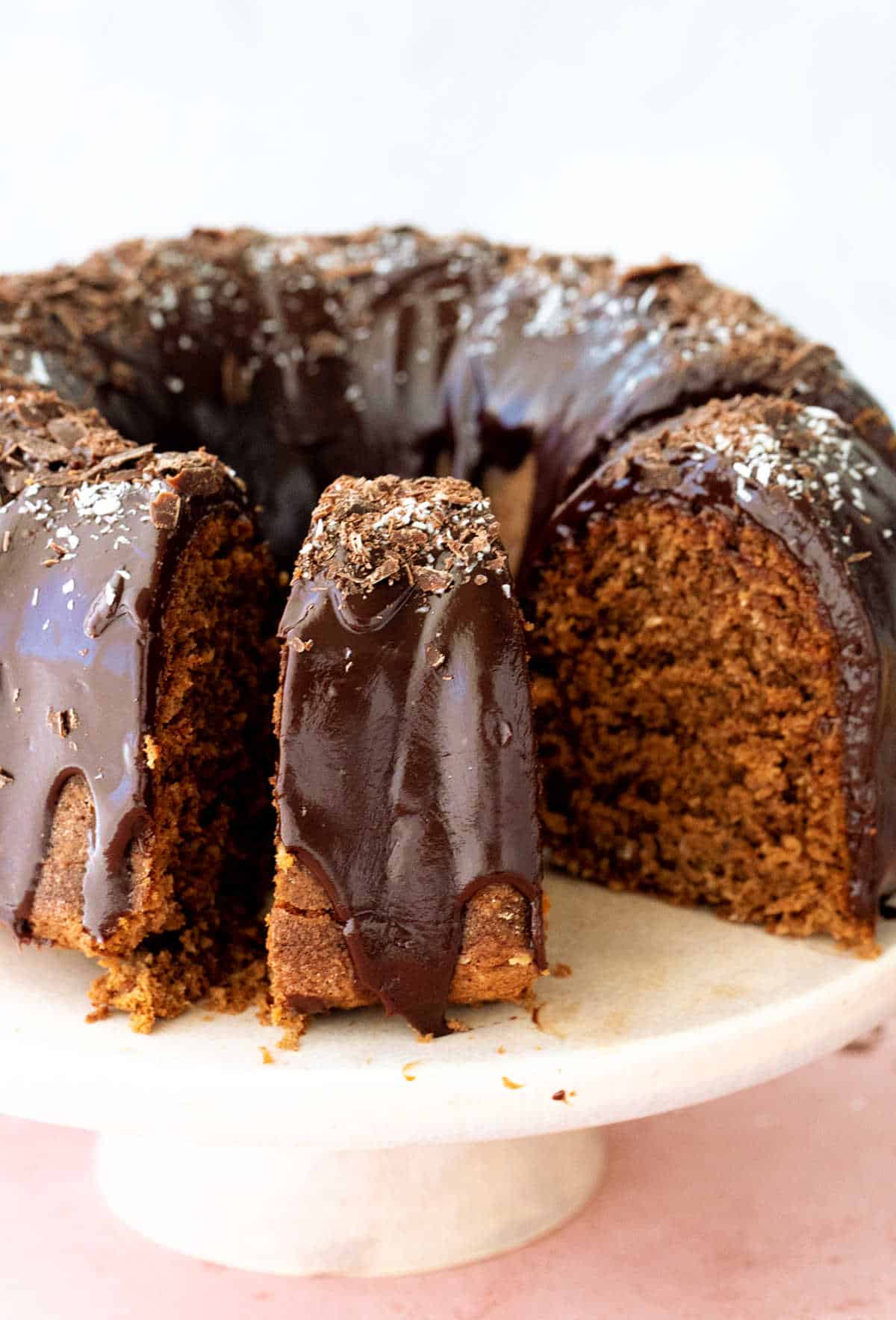
Kitchen notes
- Organization: read the recipe first and ensure you have ingredients at the correct temperature, equipment, and enough workspace. This will make the process so much easier.
- Baking time: keep in mind that all ovens and pans are different, even if they look similar. The baking time in my recipes is as accurate as it can be, but it might take you more or less time. You can use a thermometer (like the OXO oven thermometer) to check that your oven is at the right temperature. I recommend you keep track of how your oven works and what tiny details you might need to adjust.
- Coconut: when using shredded coconut, make sure it's moist and soft for best results. I tried lightly toasting it before adding it to the batter (because it brings out the flavor), but the cake lost some of its moisture.
- Chocolate ganache: you can use regular whipping or heavy cream instead of the coconut cream for the ganache, but it will have less coconut flavor.
- Sweeter cake: use milk chocolate for the ganache instead of semisweet chocolate or in addition to it.
- Ingredient substitutions: you can use all buttermilk instead of coconut milk, but the coconut flavor will be less pronounced.
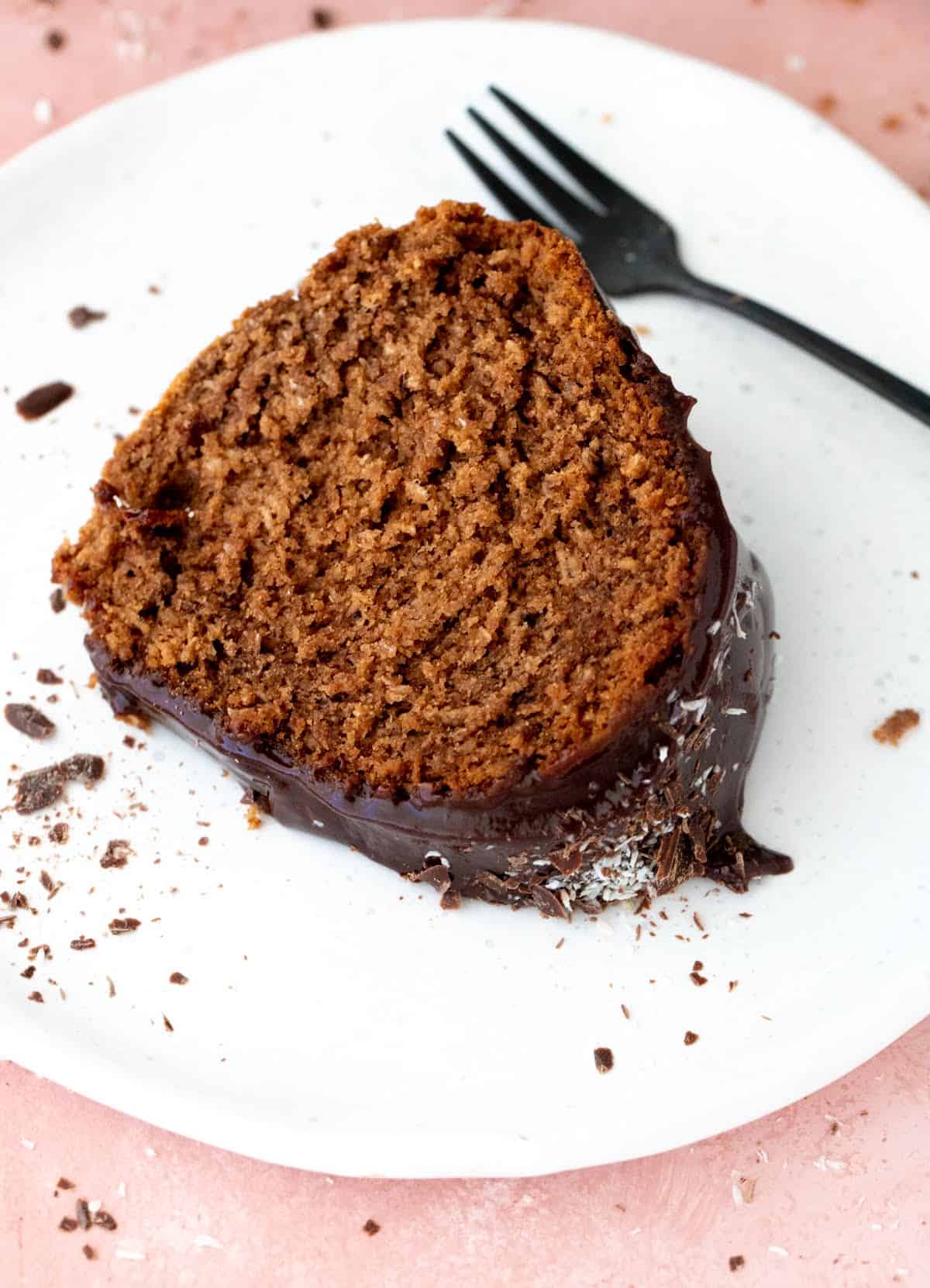
Related recipes you might like:
Let me know
If you made this recipe and loved it, you can comment below and leave a five-star ⭐️ review. Also, if you had issues, let me know so we can troubleshoot together. I appreciate honest feedback and suggestions.
You can also subscribe to our FREE email series 'Baking the Best' and our regular newsletter. Or follow and save my recipes on Pinterest.
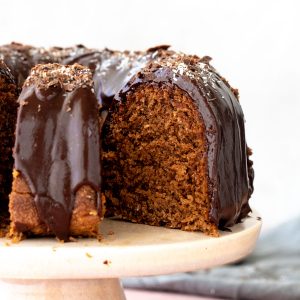
Coconut Chocolate Bundt Cake
Click the stars to Rate this Recipe!
Ingredients
For the cake:
- 2 tablespoons shortening, softened, to grease the pan
- 4 ounces semisweet chocolate, melted
- 2 cups all-purpose flour, or cake flour (not self-rising)
- 1 ½ teaspoons baking soda
- ½ teaspoon baking powder
- ½ teaspoon salt
- 1 ½ cups brown sugar, packed, light or dark
- ¾ cup buttermilk, at room temperature
- ½ cup coconut milk, at room temperature
- ½ cup vegetable oil, at room temperature
- ¼ cup sour cream, regular, full-fat
- 1 teaspoon pure vanilla extract
- 3 eggs, room temperature
- 1 cup unsweetened shredded coconut
For the ganache:
- 1 cup coconut cream, regular, full fat
- 8 ounces semisweet chocolate, chopped
- ¼ cup brown sugar
- 1 tablespoon corn syrup, or runny honey
Instructions
- Preheat the oven to 350ºF (180°C).
For the cake:
- Grease with 2 tablespoons shortening a large 10 or 12-cup bundt cake pan. I use my fingers, but you can use a brush. Make sure every nook, cranny and angle is covered. Flour it, shaking off excess. Reserve.
- Sift 2 cups all-purpose flour, 1 ½ teaspoons baking soda, ½ teaspoon baking powder, ½ teaspoon salt and 1 ½ cups brown sugar in a large bowl and stir to combine.
- Add ¾ cup buttermilk, ½ cup coconut milk, ½ cup vegetable oil, ¼ cup sour cream, 1 teaspoon pure vanilla extract and 3 eggs. Beat for about 30 seconds, until well mixed.
- Add 4 ounces semisweet chocolate, melted and 1 cup unsweetened shredded coconut and beat on medium speed for 2 minutes, until creamy and light.
- Pour batter into the prepared bundt pan and bake for 45-50 minutes, or until a cake tester or toothpick inserted in the middle part comes out clean. Depending on your oven it might take more or less, so start checking at 40 minutes.
- Let the cake cool on a wire rack for 15 minutes and then carefully remove it to a cooling rack. Let cool completely before glazing it.
- Pour the chocolate glaze (below) over the cooled cake and let it drip down the sides. Decorate with more toasted coconut and chocolate shavings.
For the ganache:
- Finely chop 8 ounces semisweet chocolate and put it in a bowl, preferably glass.
- Heat 1 cup coconut cream with ¼ cup brown sugar in a small saucepan over medium heat. Remove just when it's about to boil. It should have some bubbles, but do not let it boil.
- Immediately cover the chopped chocolate with the hot cream. Let stand for a minute so the chocolate starts to soften.
- Start mixing with a wire whisk from the middle out. The chocolate will integrate with the cream and create a smooth and shiny chocolate mixture.
- Add 1 tablespoon corn syrup or honey, mix well and it's ready to use.
Notes
Microwave: melt the ingredients on high for 10 seconds, take out and mix well. Repeat until all the chocolate is melted. Be careful you don't scorch it. That's why it's important to mix it well between each heating.
Stovetop: put the bowl with chocolate and butter over a smaller pan with a few inches of water. Over medium heat, let the chocolate and butter melt, stirring occasionally. Make sure the bottom of the bowl doesn't touch the water and that no water gets into the bowl. If the water boils too much before the chocolate is melted, turn the heat off and let the hot vapor melt the remaining chocolate. Chocolate ganache: you can use regular whipping or heavy cream instead of the coconut cream for the ganache, but it will have less coconut flavor. Homemade buttermilk: mix 1 cup of milk (preferably whole milk) with 1 tablespoon of lemon juice or white vinegar. Let the mixture sit for 5 minutes at room temperature until it thickens and slightly curdles. Stir it once more, and measure it again before using. Coconut extract: you can add about ½ teaspoon to the batter for an enhanced coconut flavor. This is a good idea if you use all buttermilk and no coconut milk. Ingredient substitutions: you can use all buttermilk instead of coconut milk for the batter and regular heavy cream for the ganache, but the coconut flavor will be less pronounced. Sweeter cake: use milk chocolate for the ganache instead of semisweet chocolate or in addition to it. Pan variations: bake it as cupcakes (about 18) or in two 8-inch layers and fill with chocolate frosting or dulce de leche. This recipe also makes two medium loaves.
Adapted from Good Housekeeping Book of Desserts

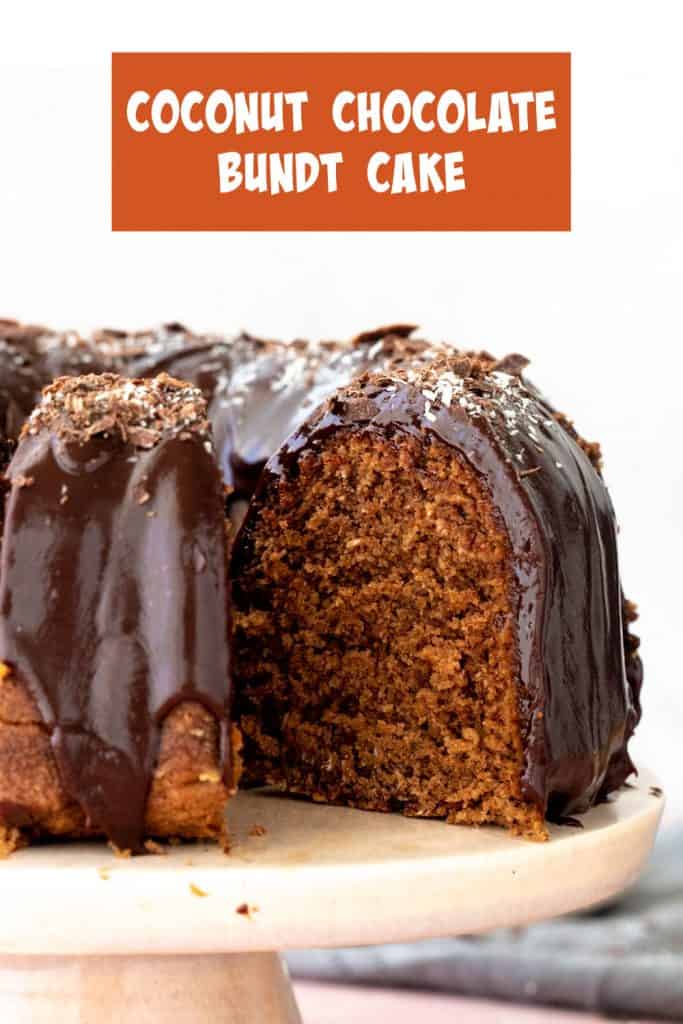
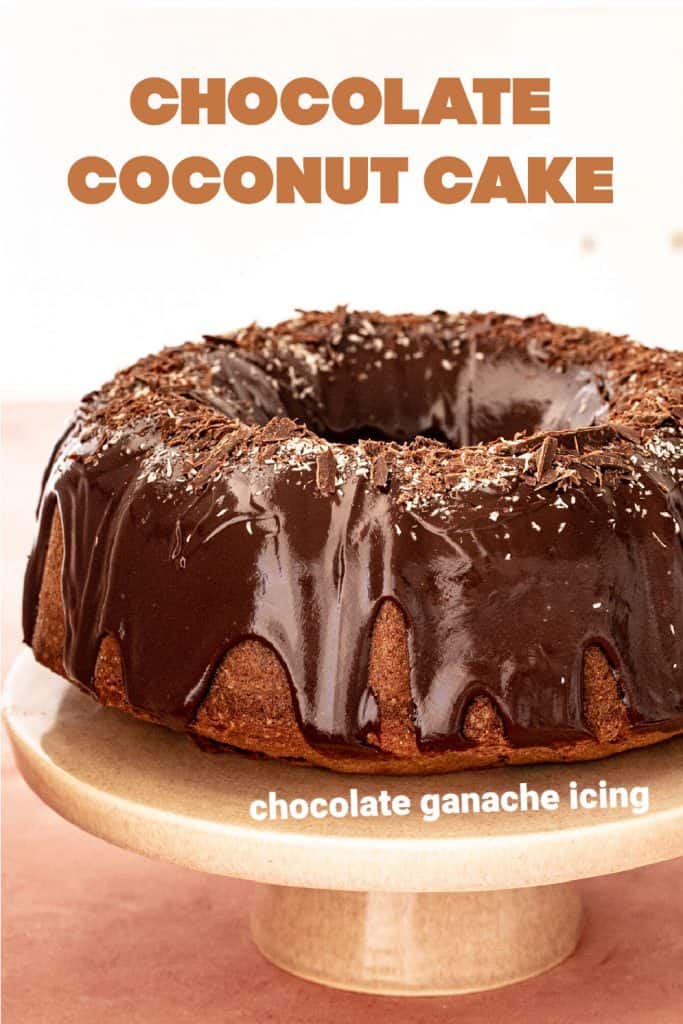
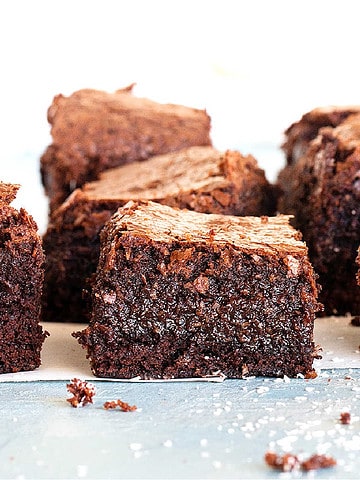
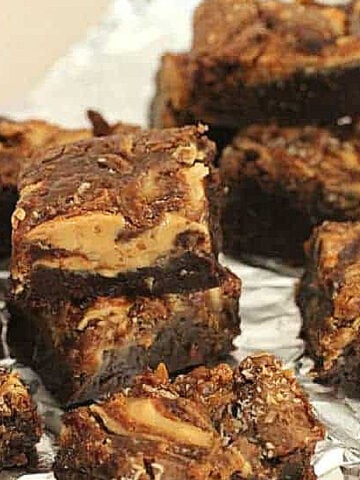
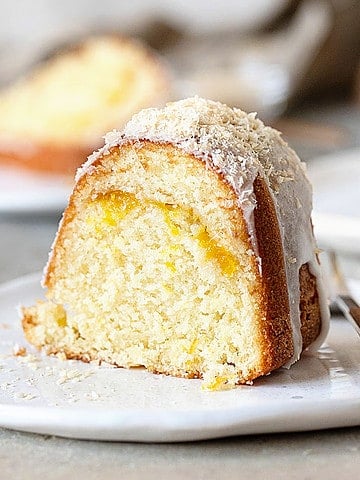
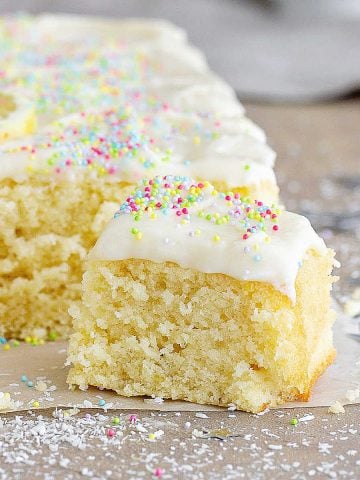
M says
Hello
In your recipe it's not mentioned sour cream but in picture can be seen . What is correct version ?
Thanks
Paula Montenegro says
Hi M, add it with the rest of the wet ingredients (buttermilk, coconut milk, eggs and oil). I updated the recipe, thanks for letting me know. Have a great week.
Eliane says
If I use sweetened coconut flakes, how much brown sugar should I use?
Paula Montenegro says
Hi Eliane! You can maybe use 1/4 cup less sugar. That said, you can also add a tablespoon of unsweetened cocoa powder to the batter.
MARY H HIRSCH says
What a wonderful post, Paula. My advice, don't throw those vintage gems away. When I had to downsize drastically, I took many of my precious cookbooks to our library for their annual book sale. It was a sad day for me and a bonanza for the library. I still miss each and everyone although I still have an ample supple on hand. You're right about good cookbooks coming out everyday. About this cake. It looks delicious and I have bookmarked it. I like coconut. This will be a winner for when I return to Aspen for the summer. The staff at The Gant thanks you. I am south of the border now, as you know, so am closer to your kind of cuisine right now. Loving my time in San Miguel. And, enjoying your posts again.
Paula Montenegro says
Glad you're enjoying the south Mary! I completely agree with vintage books and recipes being gems. I hardly throw any out in the end or pass them on, so I'll be the old lady who lived in her books haha!
Angie@Angie's Recipes says
That's a chocolate heaven! And I love the ease of preparation too.
Paula Montenegro says
A great cake, I agree!